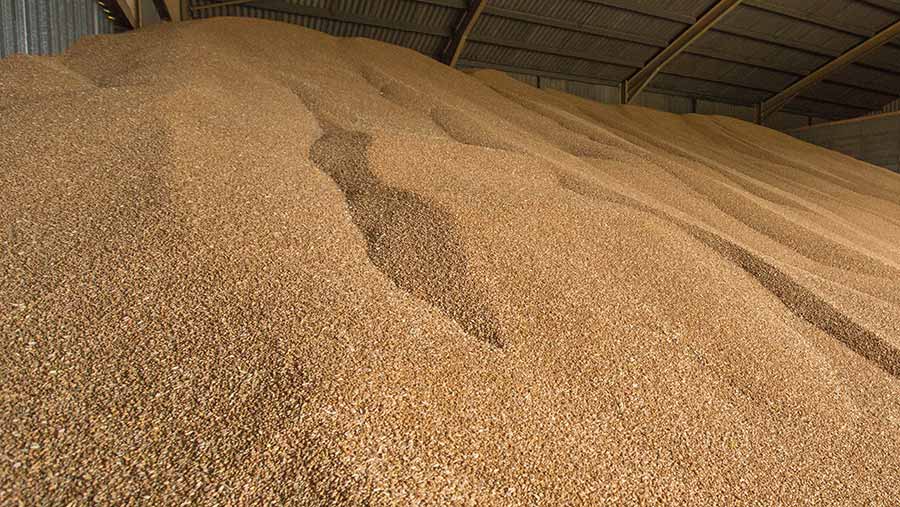Does wheat market recovery present opportunity to sell?
 © Tim Scrivener
© Tim Scrivener A bounce-back in wheat prices this week has prompted suggestions that the market may have bottomed out, though analysts suggest the outlook is still fundamentally bearish.
The Farmers Weekly spot ex-farm feed wheat price, derived from a cross-section of merchants around the country, stood at £199/t on Wednesday 29 March.
That was up £17/t on the previous week, but still below the £209/t it stood at the week before that.
See also: Find the latest futures prices, updated every 15 minutes
London May futures – which represent a theoretical delivered price rather than an ex-farm price – also recovered, having dropped below £200/t last week. On Wednesday 29 March, the May feed wheat contract stood at about £210/t, with November at £223/t.
The firmer tone was triggered initially by suggestions that Russia may seek to limit its exports in the coming weeks, though this was subsequently denied.
Ukraine has also slowed its shipments, while there are lingering concerns that the Black Sea corridor agreement may expire after 60 days (in mid-May), as Russian negotiators had previously refused to sanction a 120-day extension.
Weather reports have also spurred the market, with ongoing dryness reported in the key wheat-growing state of Kansas.
“Institutional investors, which had taken up short positions as prices were falling, have also now closed them out, so it’s not surprising we have seen the market bounce back,” said James Bolesworth of CRM AgriCommodities.
The upturn has prompted some farmer selling, according to Simon Wilcox of Cefetra Grain, as the slide into sub-£200/t territory ex-farm had persuaded some to “throw in the towel”.
Volatile market
However, he said the market remained volatile and growers should take advantage of any upswings, be that in response to weather news, USDA data, or Black Sea trade developments.
Overall, the AHDB warned that the grain market “remains more on the bearish side”.
“Cheap Russian supplies will continue to pressure markets and, looking towards new crop, plentiful supplies are expected from Europe and US, ” said lead analyst Millie Askew.
Saxon Agriculture has also pointed to “the reality of the residual surplus” in the UK market, with an export surfeit.
Merchants are, however, encouraged that UK grain remains competitive at current prices, which should help sales as the season progresses.
Should I store or sell?
With November wheat futures now trading at about a £10/t premium to May futures, having previously been at a discount, the AHDB has been questioning whether it is best to sell now or store for later.
The key consideration, according to senior analyst Anthony Speight, is whether the interest gained from cash in the bank now will outweigh the cost of holding grain in store in the hope of a better price after harvest.
Individual circumstances will vary, as will price swings in the coming weeks.
But based on various assumptions, in many cases it would appear that selling now and earning interest at, say, 3.65% would be more profitable than waiting until mid-August to sell and incurring four-and-a-half months’ extra storage costs.
“Other benefits include cashflow and clean stores for harvest 2023,” Mr Speight added.
“The key factor now is knowing your cost of storage, as well as your break-even point.”
